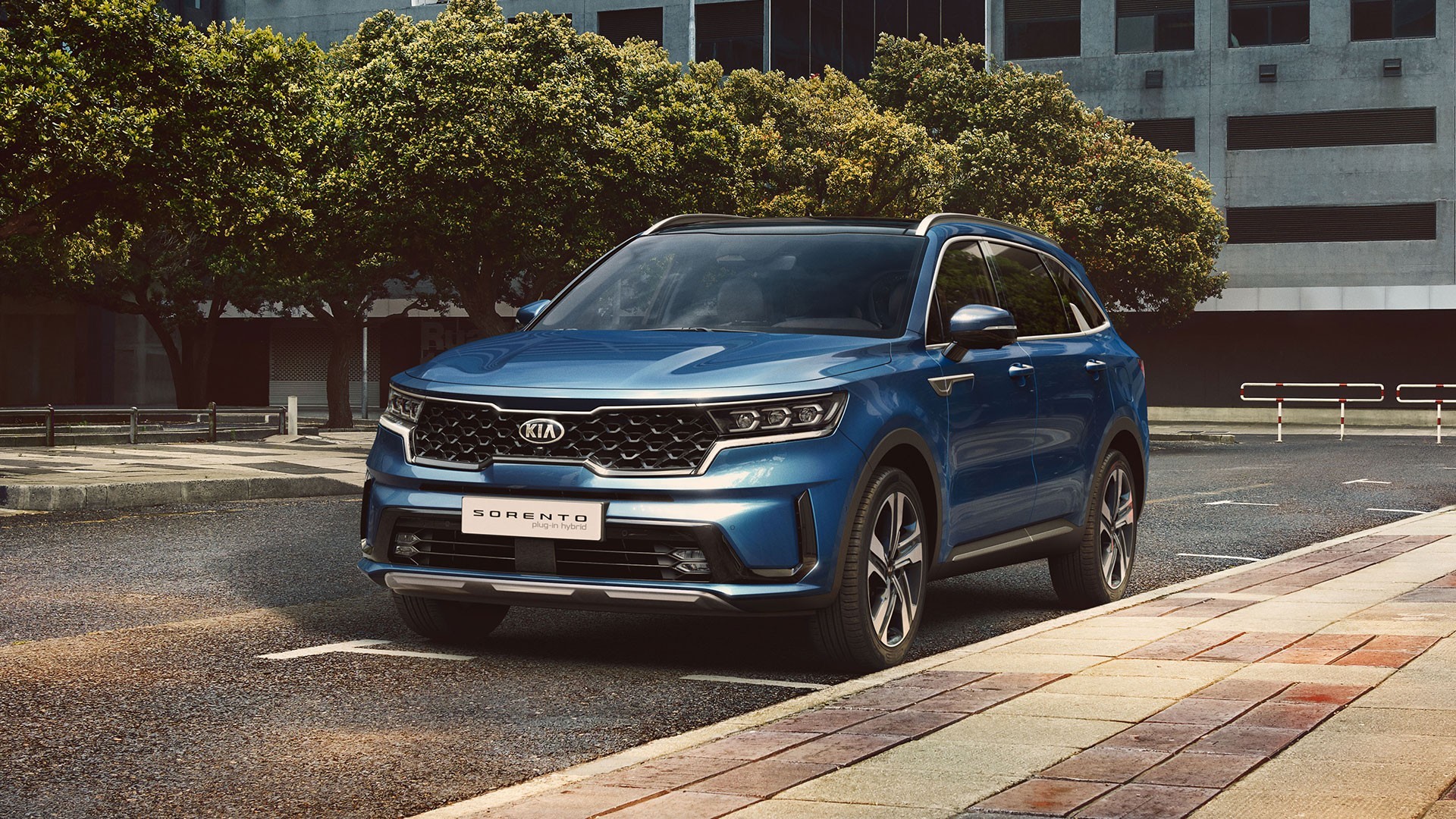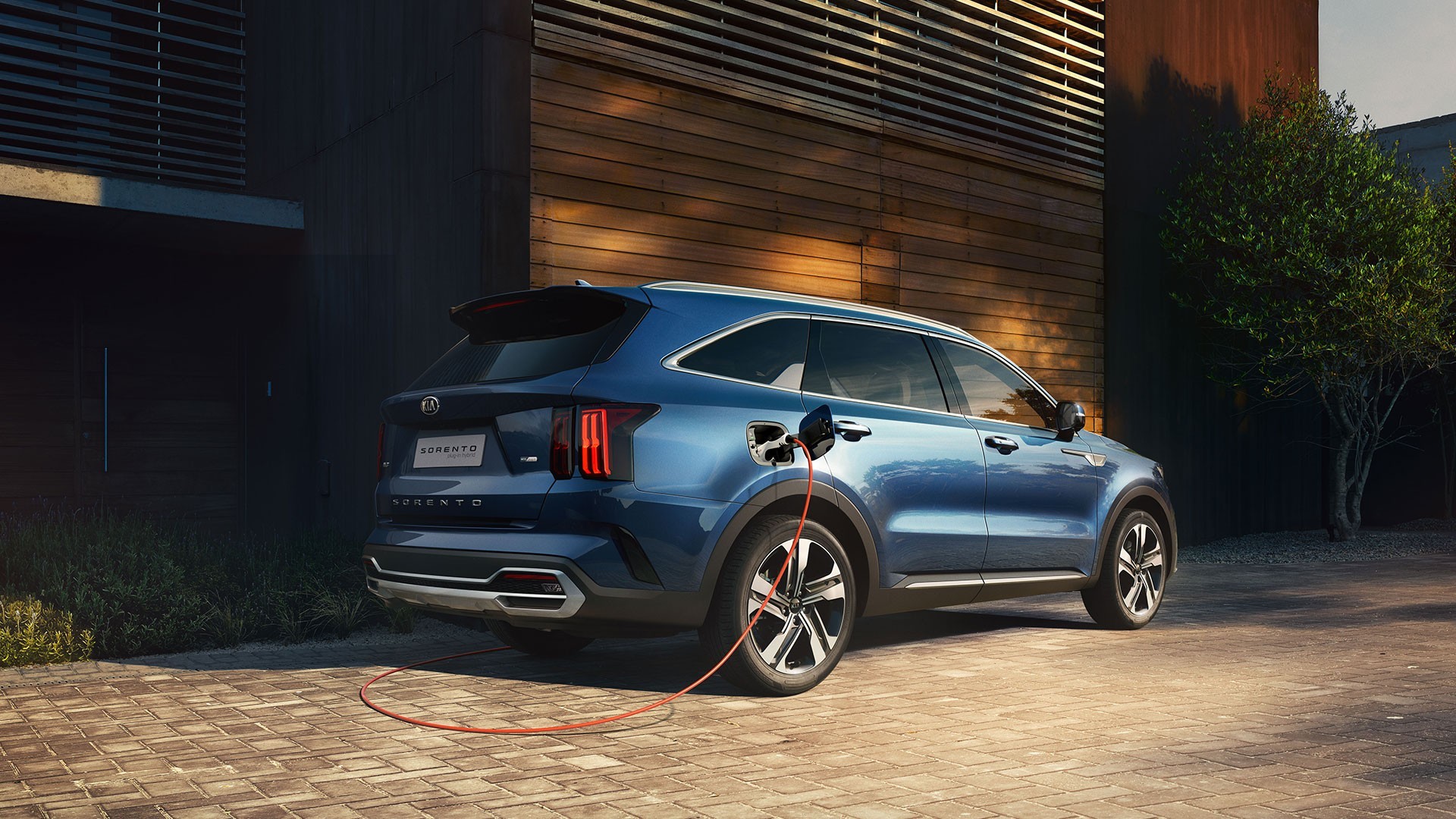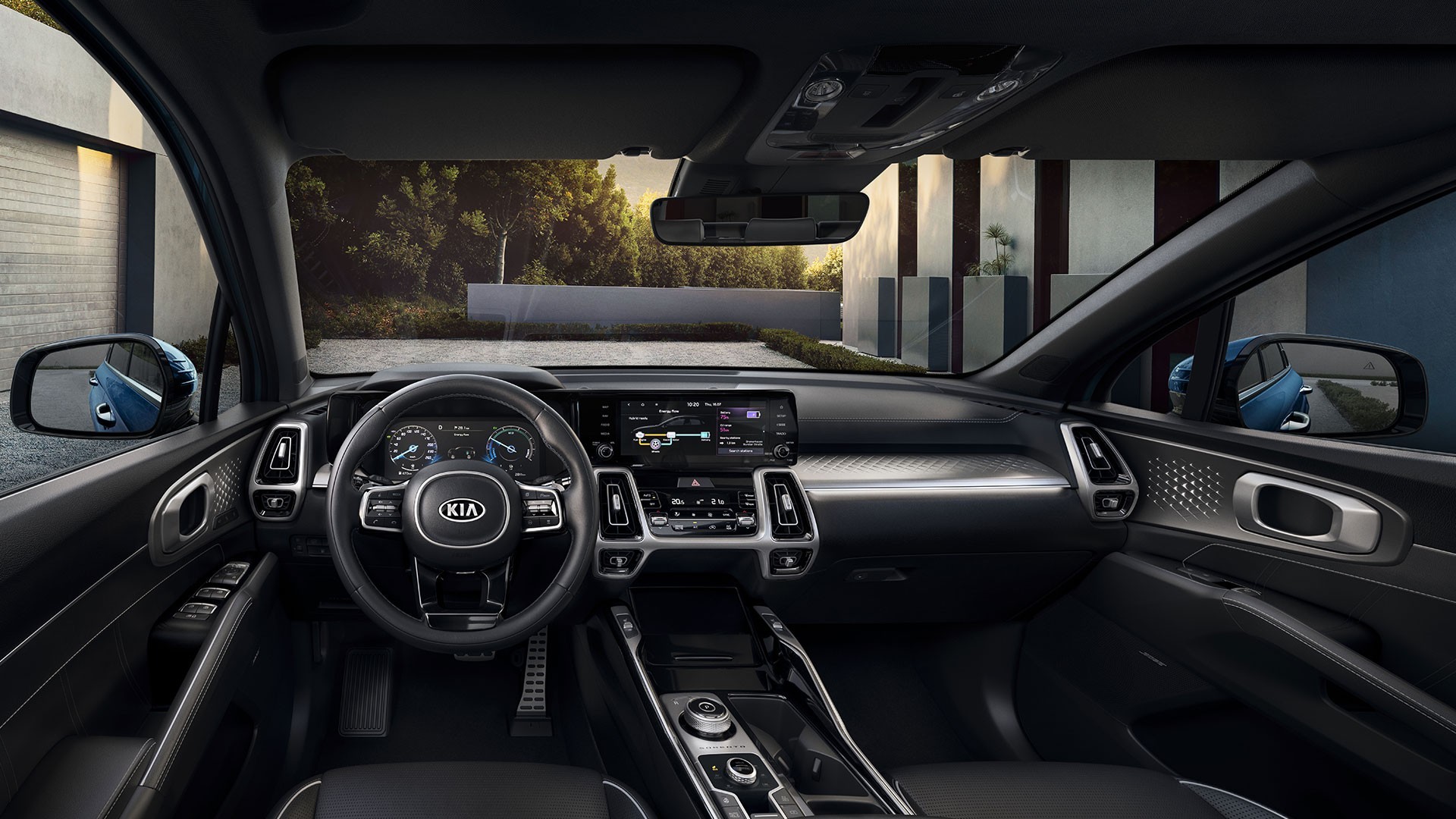KIA’s New Sorento PHEV Set for Early-21 Debut
Published on 27th August 2020 at 08:11
Kia Motors has revealed the new fourth-generation Kia Sorento, this variant a Plug-in Hybrid, (PHEV), SUV, their offering in the very popular D-segment. It comes with generous luggage space plus the choice of five- and seven-seat layout.
This is the second electrified model in the new Sorento line-up, and sits alongside the low-emissions Sorento Hybrid. This new PHEV combines a turbocharged petrol engine with a high capacity battery pack and high-output electric motor, allowing drivers the option to complete shorter drives on all-electric, zero-emissions power.
Sales of the new Sorento Plug-in Hybrid will commence in select European markets in early 2021, with Kia’s unique 7-Year, 150,000-kilometre warranty as standard.
Boot Space
Boot space is some 809 litres for seven-seat model and 898 litres for the five-seat models, with two rows of seats in place. In seven-seat models, with all seven seats in place, boot space is 175 litres, compared to 179 litres for its Hybrid counterpart.
PHEV Power and Drive
Driven through all four wheels via a six-speed transmission, the Sorento Plug-in Hybrid’s powertrain is a 1.6-litre T-GDi (turbocharged gasoline direct injection) engine, producing180PS and 265Nm torque. The engine is paired with a high-capacity 13.8kWh lithium-ion polymer battery pack and a powerful electric motor which produces 66.9kW and 304Nm torque. Combined, this powertrain produces 265PS and 350Nm torque.
Redesigned Cluster
Inside, the cabin gets a redesigned 12.3-inch fully-digital instrument cluster, with new graphics and dials to provide drivers with a clear picture of the powertrain’s status. It enables drivers to keep track of the battery’s state of charge, as well as the flow of electric and gasoline power through the powertrain. The 10.25-inch touchscreen infotainment system also features new functionality to enable drivers to easily locate vehicle charging points on-the-go.
Touchscreen Access
The touchscreen infotainment system enables full, seamless smartphone integration with Apple CarPlay and Android Auto. A 12-speaker BOSE surround-sound audio system is also available, delivering a more immersive sound to all passengers, as well as a cabin Mood Lighting system, with up to 64 colours for users to choose from.
It also offers Kia’s UVO Connect telematics system, connecting drivers by providing invaluable information via the in-car touchscreen and on their smartphone. Featuring Kia Live services provide drivers with live traffic information, weather forecasts, points of interest, and details of potential on- and off-street parking (including price, location and parking availability) – in addition to nearby vehicle charging points. UVO Connect also enables drivers to send route directions to their car before a journey, and check the location of their vehicle at any time.
Driver Assist Systems
The Sorento Plug-in Hybrid also offers a range of Kia’s Advanced Driver Assistance Systems (ADAS), including;
· Forward Collision-Avoidance Assist (FCA) technology with pedestrian, cyclist and vehicle detection
· FCA Junction, which detects vehicles at junctions when turning
· Blind-Spot View Monitor (BVM)
· Surround View Monitor (SVM)
· Blind-spot Collision-Avoidance Assist (BCA
· Intelligent Speed Limit Assist (ISLA)
· Smart Cruise Control with Stop&Go (SCC)
· Navigation-based SCC (NSCC)
· Lane Following Assist (LFA)
· Driver Attention Warning (DAW)
· Highway Driving Assist (HDA)
· Rear View Monitor (RVM) with Reverse Parking Collision-Avoidance Assist (PCA) and Rear Cross-traffic Collision-Avoidance Assist (RCCA)
· Safe Exit Assist (SAE) feature prevents rear doors from opening if the vehicle detects a hazard approaching from behind, such as a cyclist or another vehicle.
The new Sorento also implements Kia’s first Multi-Collision Brake system, enabling the Sorento to mitigate the severity of secondary collisions. It automatically applies vehicle brakes when the airbags have been deployed after an initial collision, further protecting occupants from secondary frontal or side impacts.



